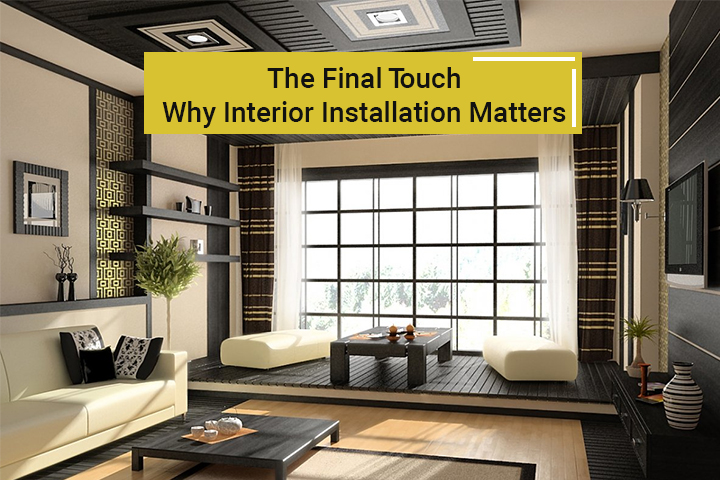When it comes to home improvement or commercial space design, there’s a significant amount of focus on the initial stages of planning, choosing materials, and conceptualizing the layout. However, one critical phase that often gets overshadowed is the final installation. Interior installation is more than just a concluding step; it’s the moment when your vision truly comes to life. Here’s why this phase is paramount and how it impacts the overall outcome of your project.
The Importance of Interior Installation
Precision and Detail
Interior installation is where precision meets aesthetics. Every inch matters when fitting cabinets, laying flooring, or installing lighting fixtures. Skilled installers ensure that every element is perfectly aligned, which not only enhances the visual appeal but also ensures functionality. Imagine a countertop that’s slightly off-level or a misaligned door frame—these small imperfections can detract significantly from the overall look and feel of the space.
Quality Assurance
The quality of the installation can make or break the longevity of the materials used. For instance, improperly installed tiles can lead to cracking and water damage, while poorly fitted windows and doors can cause drafts and energy inefficiency. Professional installers bring expertise and attention to detail that prevent these issues, ensuring that your investment stands the test of time.
Seamless Integration
A well-executed installation ensures that all elements of your design are seamlessly integrated. This means that the transitions between different materials, like hardwood to tile or wall paint to trim, are smooth and cohesive. This level of integration creates a harmonious look that enhances the overall aesthetic of your space.

The Role of Professional Installers
Expertise and Experience
They understand the nuances of different materials and the best practices for installation. For example, installing a hardwood floor requires knowledge about acclimating the wood to the room’s humidity levels before installation. This kind of expertise ensures that the job is done right the first time.
Problem-Solving Skills
Whether it’s an uneven subfloor or an irregularly shaped room, professional installers have the problem-solving skills to overcome these hurdles. They can adapt to on-site conditions and make adjustments that a less experienced person might not consider.
Time Efficiency
Time is a critical factor in any project. Professional installers work efficiently, adhering to deadlines without compromising on quality. Their experience allows them to anticipate potential issues and address them proactively, which helps keep the project on track.
The Impact on Overall Design
Aesthetics and Cohesion
The final installation phase is where your design vision is fully realized. It’s the difference between a space that looks haphazard and one that appears thoughtfully curated. Professional installation ensures that every component, from lighting fixtures to cabinetry, is installed in a way that complements the overall design, creating a cohesive and aesthetically pleasing environment.
Functionality and Comfort
Beyond aesthetics, a good installation ensures that your space is functional and comfortable. Properly installed kitchen appliances make cooking easier, well-fitted windows enhance natural light while maintaining insulation, and correctly laid flooring provides a durable and comfortable walking surface. These functional aspects are crucial for the day-to-day usability of the space.
Value Addition
A professionally installed interior not only looks better but also adds value to your property. High-quality finishes and meticulous installation can increase the market value of your home or commercial space. Potential buyers or tenants are more likely to be impressed by a space that has been well-finished and move-in ready, which can translate into a higher return on investment.

Common Pitfalls to Avoid
Cutting Corners
Choosing to cut corners on installation to save time or money can compromise the entire project. Using cheaper materials or rushing the installation process can lead to problems down the line, from aesthetic issues to structural damage. Investing in quality installation upfront can save you significant costs in repairs and replacements later.
Ignoring Manufacturer Instructions
Each material and fixture comes with specific installation instructions from the manufacturer. Ignoring these guidelines can void warranties and lead to improper installation. Professional installers follow these instructions meticulously to ensure that each component is installed correctly and retains its warranty.
Conclusion
The final touch of interior installation is more than just a step in the process; it’s a critical phase that ensures the success of your entire project. From precision and quality assurance to seamless integration and added value, professional installation brings numerous benefits that are hard to achieve otherwise. By investing in skilled installers, you not only bring your design vision to life but also ensure that it stands the test of time, providing beauty, functionality, and value for years to come.
Remember, while the allure of a beautifully designed space starts with an idea, it’s the impeccable execution of the installation that truly makes it shine.

